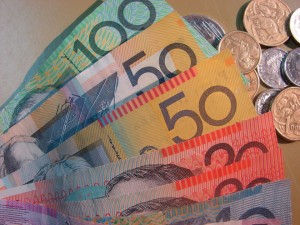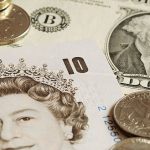 Australian dollar fell to lows unseen in 3 1/2 years against its US counterpart on Thursday, after a report said that Australian employers unexpectedly cut jobs, while the rate of unemployment in the country remained steady in December.
Australian dollar fell to lows unseen in 3 1/2 years against its US counterpart on Thursday, after a report said that Australian employers unexpectedly cut jobs, while the rate of unemployment in the country remained steady in December.
AUD/USD plummeted to a daily low at 0.8796 at 7:20 GMT, also the pairs lowest point since August 25th 2010, after which consolidation followed at 0.8802, plunging 1.28% for the day. Support was likely to be found at August 25th 2010 low, 0.8772, while resistance was to be encountered at current session high, 0.8906.
According to a report by the Australian Bureau of Statistics, employers in Australia unexpectedly cut jobs in December, which may urge the Reserve Bank of Australia (RBA) to further reduce borrowing costs. Economy lost 22 600 job positions in December, which confounded experts expectations of a job gain of 10 000. In November nations economy managed to add 15 400 new jobs, which was a revision down from 21 000 jobs previously.
At the same time, the rate of unemployment in Australia remained unchanged at 5.8% in December, which came as a result of the weaker participation rate during the same month, 64.6%, after a month ago the rate was 64.8%.
Traders saw a 43% probability that the Reserve Bank of Australia will cut its record-low benchmark interest rate by its meeting in July, according to swaps data by Bloomberg. Yesterday the odds of such a move were 24%.
“We continue to estimate the fair value of the Aussie in the low to mid 80s,” said David Forrester, a senior vice president for Group of 10 foreign-exchange strategy at Macquarie Bank Ltd. in Singapore, cited by Bloomberg News. “The RBA will maintain an easing bias but it will want to sit back and let the Aussie dollar do some of the work.”
Meanwhile, the Bureau of Labor Statistics, part of the Department of Labor in the United States, said on Wednesday that nation’s PPI surged to an annualized 1.2% in December, after the index reached 0.7% in November. Analysts had expected the PPI will rise to 1.1%. On a monthly basis, the PPI increased 0.4% in December, in line with analysts’ forecasts, after the index dipped 0.1% in the preceding month.
A separate report showed that a gauge, which tracks manufacturing activity in the region of New York, soared to a reading of 12.1 in January, or the strongest level since May 2012, which was also more than three times larger than the initially projected reading. According to the median estimate of experts, the index should have increased to 3.5, after an upward revision to 2.22 in the previous month.
These data points provided support to greenback’s demand, as it favored the view that the Federal Reserve Bank may continue tapering during the year. Central bank’s policy makers said on December 18th that they will reduce monthly asset purchases to $75 billion from $85 billion, underscoring improving labor market conditions.
The bank will probably continue to pare stimulus by $10 billion at each policy meeting before exiting the program in December, according to a Bloomberg News survey of 41 economists, conducted on January 10th.
In addition, Fed President for Atlanta Dennis Lockhart, who does not vote on monetary policy this year, said yesterday that he expects the rate of inflation, that has been “too low”, will accelerate to reach Federal Reserve’s 2% objective, a level considered as providing price stability in the country.
Elsewhere, the Aussie was retreating against the euro, with EUR/AUD cross up 1.34% on a daily basis to trade at 1.5470 at 8:08 GMT. AUD/NZD pair was losing 1.02% today to trade at 1.0588 at 8:08 GMT, after having touched earlier lows unseen since December 2005 at 1.0576.





